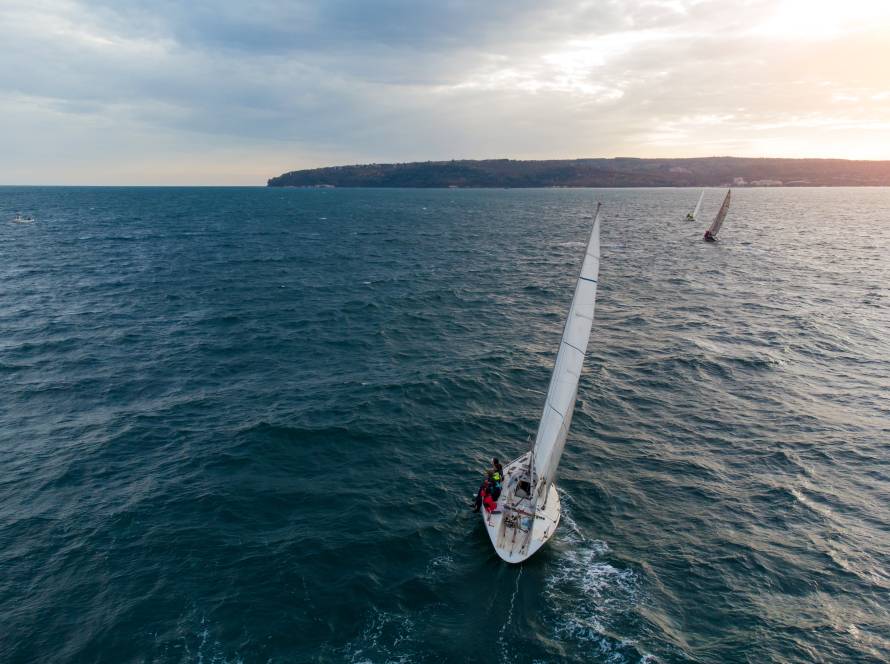Introduction
Water is life, whether you are crossing oceans on a sailboat or running a household in a remote coastal area. For those who cannot rely on traditional municipal supplies, desalination offers a dependable solution by turning seawater into safe, drinkable freshwater. But how does desalination actually work?
In this guide, we break down the desalination process step by step. If you are a sailor planning long trips or a homeowner needing dependable water, understanding the process is important. This knowledge will help you choose the right system.
Step 1: Seawater Intake and Pre-Filtration
The desalination process begins by drawing seawater into the system. Before it reaches the reverse osmosis (RO) membranes, the water passes through pre-filters that remove larger particles such as sand, silt, and organic matter.
- Protects delicate RO membranes from clogging
- Extends system life and reduces maintenance costs
- Ensures consistent water quality even in turbid coastal waters
Step 2: High-Pressure Pumping
Once pre-filtered, the seawater is pressurized using a high-pressure pump. This step is crucial because reverse osmosis membranes require significant pressure to separate salt and impurities from freshwater.
- Pumps are designed for durability in marine environments
- Energy-efficient systems reduce power draw on sailboats and off-grid homes
- Proper pressure ensures maximum water production with minimal waste
Step 3: Reverse Osmosis Filtration
Reverse osmosis is the heart of desalination. Under high pressure, seawater is forced through a semi-permeable membrane that blocks salt, bacteria, and microplastics while allowing only pure water molecules to pass.
Benefits include:
- High purity: Removes up to 99.9% of dissolved salts and contaminants
- Safe for drinking and cooking: Produces crystal-clear freshwater
- Reliable performance: Consistent output, even in remote areas
Step 4: Post-Treatment and Storage
After filtration, the water goes through a remineralizing filter, and may go through optional post-treatment stages such as activated carbon filters or UV sterilization. This step ensures the water tastes clean and remains free from bacteria or odors. The freshwater is then stored in onboard tanks or household reservoirs.
- Enhances water taste and quality
- Provides added protection for long-term storage
- Reduces reliance on bottled water
Step 5: System Monitoring and Maintenance
Even the best desalination systems require routine care. Monitoring pressure levels, replacing filters on schedule, and flushing membranes after use are all critical for long-term reliability.
- Prevents performance loss due to fouling
- Keeps operating costs low
- Ensures safe water production for years to come
Applications for Sailors and Homeowners
While the technology is the same, applications differ slightly:
- Sailors and liveaboards: Depend on compact, energy-efficient units for long voyages and remote anchorages.
- Homeowners and communities: Require higher-capacity systems that support daily household use, irrigation, or resort operations.
ECHOTec Watermakers offers configurations tailored to both lifestyles, from rugged marine models to scalable land-based systems.
Energy Efficiency in Desalination Systems
Modern watermakers are designed to maximize output while minimizing power consumption. Energy-efficient membranes and pumps allow sailors and homeowners to reduce fuel or electricity costs without sacrificing performance.
Choosing the Right Capacity for Your Needs
Capacity depends on daily usage. Sailors may need smaller units producing 13 to 30 gallons per hour, while off-grid homes or resorts require systems capable of handling hundreds of gallons per day. Matching capacity to demand ensures reliability and cost-effectiveness.
Environmental Benefits of Onboard Desalination
Producing freshwater through desalination reduces reliance on bottled water and minimizes plastic waste. It also lessens the carbon footprint associated with transporting water to remote locations.
Common Challenges and How to Overcome Them
While desalination is reliable, issues like membrane fouling, power shortages, or high salinity can affect performance. Regular maintenance, pre-filtration, and proper system sizing help overcome these challenges.
Long-Term Value and Return on Investment
Although desalination systems require upfront investment, the long-term savings are significant. By eliminating water deliveries, reducing bottled water use, and providing independence, watermakers quickly pay for themselves.
Maintenance Best Practices for Reliable Performance
Routine maintenance is the key to long-lasting desalination systems. Tasks such as filter changes, membrane flushing, and pressure monitoring prevent costly breakdowns and ensure a steady supply of clean water.
Innovations in Desalination Technology
New advancements in desalination include energy recovery devices, self-cleaning filters, and improved RO membranes. These innovations make systems more efficient, durable, and user-friendly for both sailors and homeowners.
Comparing Marine and Land-Based Desalination Systems
While the core reverse osmosis process is the same, marine systems are compact and energy-efficient for life at sea, whereas land-based systems are designed for higher capacity and scalability. Understanding these differences helps users choose the right fit for their environment.
Your Reliable Freshwater Solution Starts Here.
Desalination may sound complex, but in practice it is a straightforward process: pre-filter, pressurize, filter through reverse osmosis, treat, and store. Each step ensures safe, reliable freshwater for sailors and homeowners alike.
If you are looking for dependable water solutions, explore the range of ECHOTec Watermakers to find a system engineered for durability, ease of use, and long-term performance.
Give us a call today!


